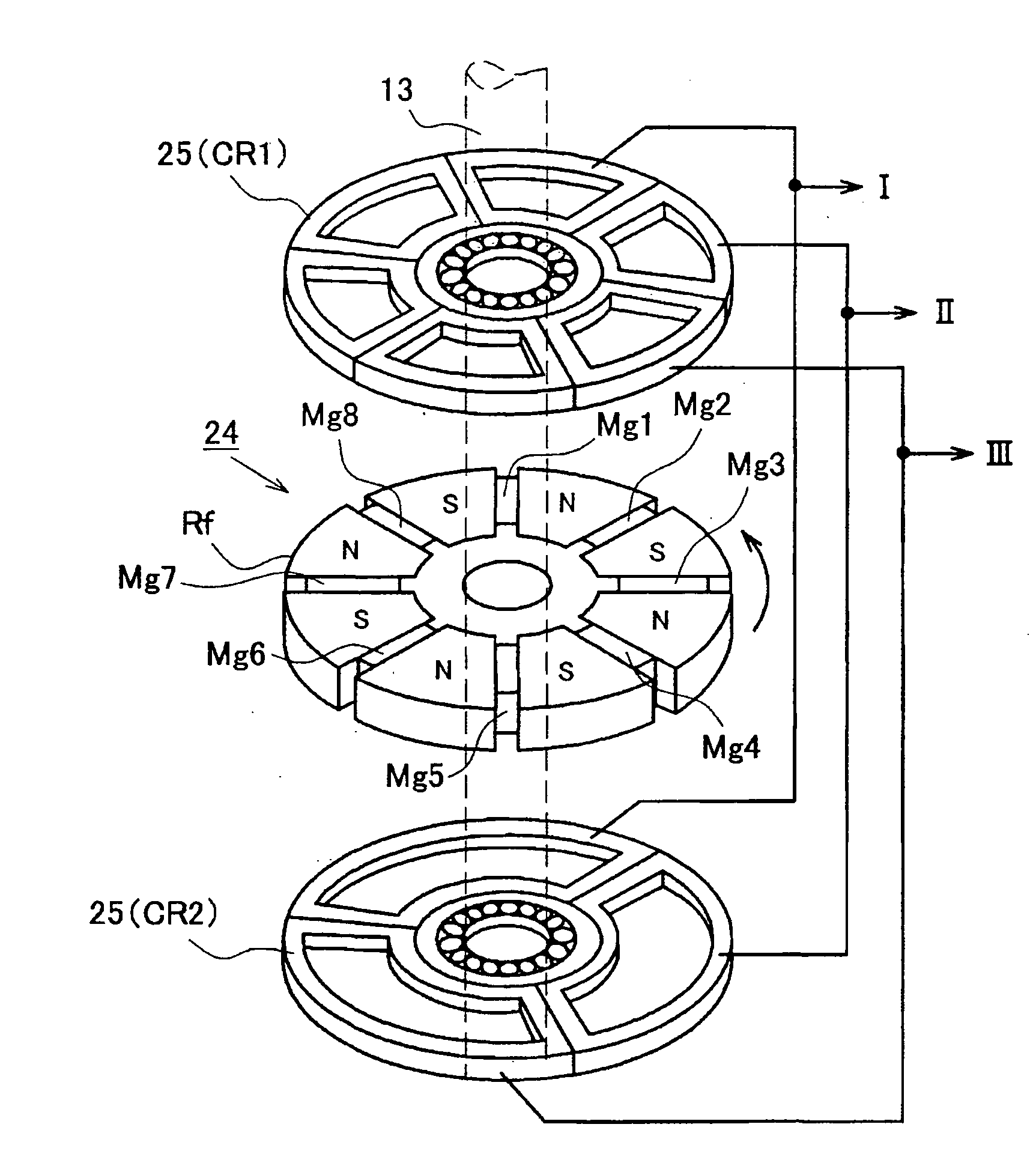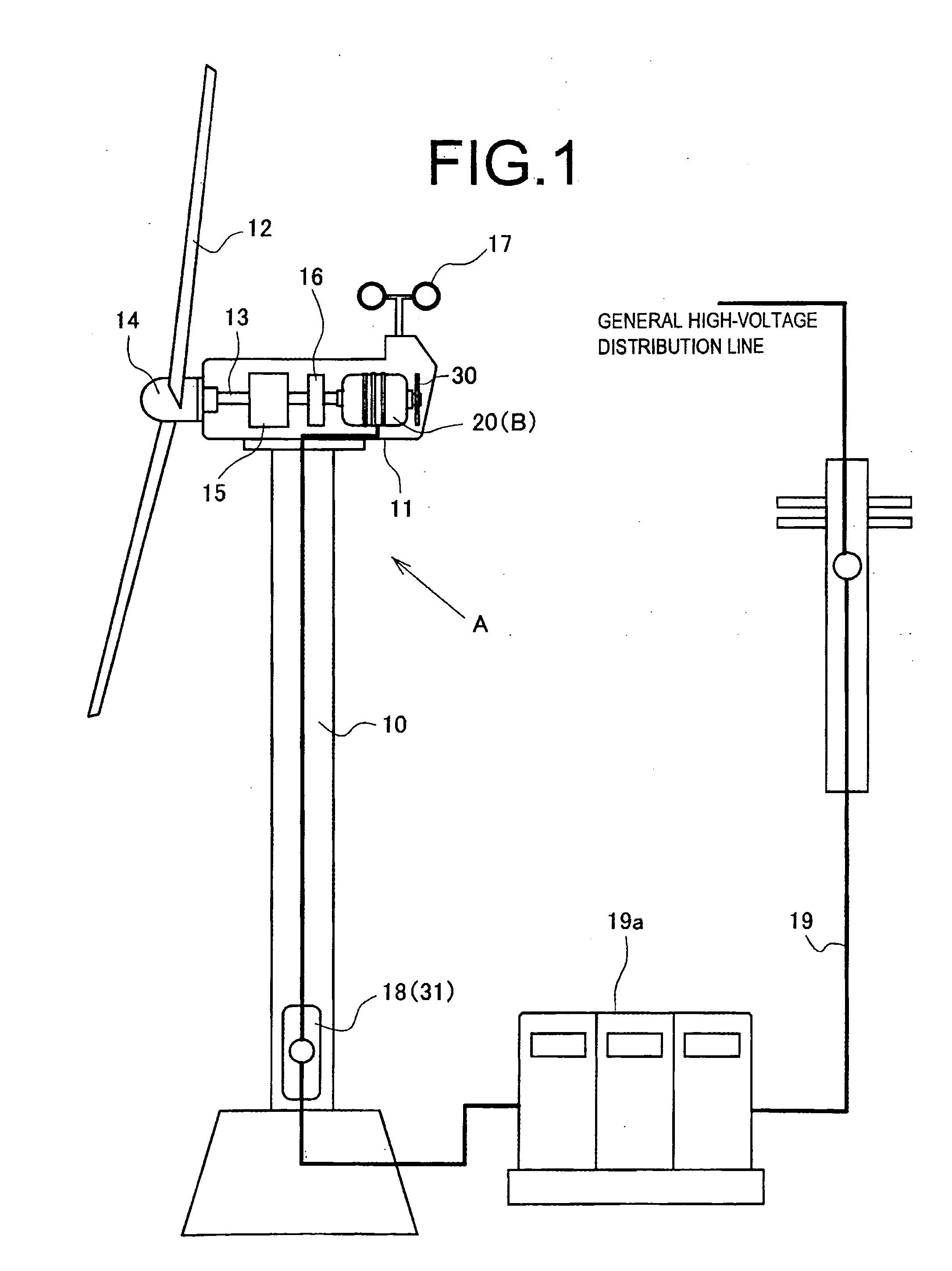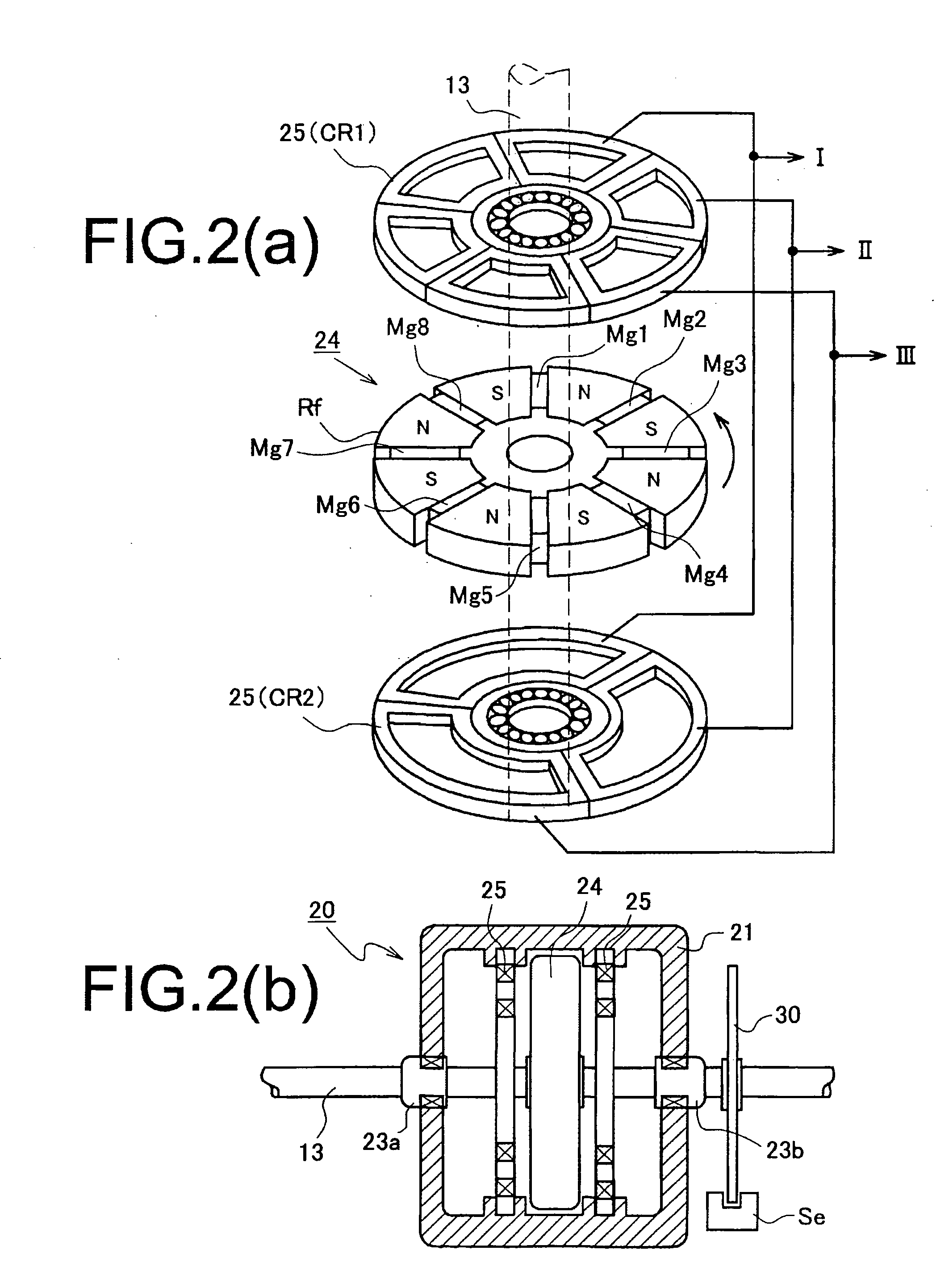Power generator and power generation system including this power generator
a power generator and power generation technology, applied in the direction of electric generator control, magnetic circuit shape/form/construction, magnetic circuit rotating parts, etc., can solve the problem of low effective power generation rate, inability to obtain stable electric power, and change in energy such as wind power or water power, so as to prevent abnormally high frequency of power to be generated, stable power generation, and increase the effect of inductan
- Summary
- Abstract
- Description
- Claims
- Application Information
AI Technical Summary
Benefits of technology
Problems solved by technology
Method used
Image
Examples
first embodiment
[0036]As shown in FIGS. 5(a) and (b), a magnet rotor 24 includes magnetic poles Mn1 to Mn8 having eight (a multiple number of 4) N and S poles annularly alternately arranged and a rotary shaft 13. A line x-x in the drawing denotes the center of rotation. Moreover, in a stator coil 25, a first coil body CR1 and a second coil body CR2 having the same configuration are arranged on a front surface side and a back surface side of the magnet rotor 24, respectively. Each of the first and second coil bodies CR includes six winding wires Co1 to Co6 as depicted in FIG. 5(b), and a pair of Co1 and Co4, a pair of Co2 and Co5, and a pair of Co3 and Co6 are electrically wire-connected, electromotive force having the same phase being produced in each pair. The first and second coil bodies CR1 and CR2 are wire-connected through switching means 35 as depicted in FIG. 5(a). Additionally, a large inductance is set when this switching means 35 is wire-connected in a direction indicated by Sa in the dra...
second embodiment
[0037]As shown in FIG. 6(a) and FIG. 6(b), a magnet rotor 24 includes magnetic poles Mn1 to Mn8 having eight (a multiple number of 4) N and S poles annularly alternately arranged and a rotary shaft 13 (the same configuration as the first embodiment). Further, in a stator coil 25, a first coil body CR1 and a second coil body CR2 are arranged on a front surface side and a back surface side of the magnet rotor 24, respectively. This first coil body CR1 includes Co1, Co2, Co3, Co4, Co5, and Co6, and a pair of Co1 and Co4, a pair of Co2 and Co5, and a pair of Co3 and Co6 are electrically wire-connected, electromotive force having the same phase being produced in each pair.
[0038]On the other hand, the second coil body CR2 includes three winding wires Co1 to Co3. Such first and second coil bodies CR1 and CR2 are wire-connected through switching means 36 as depicted in FIG. 6(a). Furthermore, when this switching means 36 is wire-connected in a direction indicated by Sa in the drawing, elect...
PUM
 Login to View More
Login to View More Abstract
Description
Claims
Application Information
 Login to View More
Login to View More - R&D
- Intellectual Property
- Life Sciences
- Materials
- Tech Scout
- Unparalleled Data Quality
- Higher Quality Content
- 60% Fewer Hallucinations
Browse by: Latest US Patents, China's latest patents, Technical Efficacy Thesaurus, Application Domain, Technology Topic, Popular Technical Reports.
© 2025 PatSnap. All rights reserved.Legal|Privacy policy|Modern Slavery Act Transparency Statement|Sitemap|About US| Contact US: help@patsnap.com



